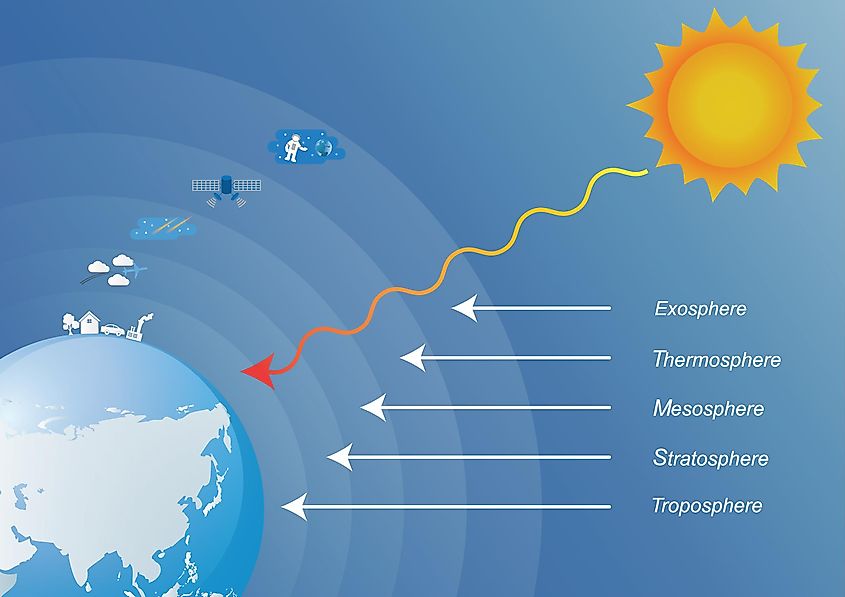
What Are The 5 Layers Of The Earth's Atmosphere?
- Planes usually fly in the lowest parts of the stratosphere layer. The air is a bit thinner, so there is not much resistance, which makes the planes fly faster.
- Almost all clouds you see up in the sky appear in the troposphere, and 99% of the water that vaporizes from the surface is found here.
- The ozone layer, the one that protects us from radiation that comes from the Sun and outer space, is found in the stratosphere.
The atmosphere of Earth is divided into several different layers. The easiest way to think about the atmosphere above our planet is to imagine an invisible shield that protects our planet from all the bad stuff that floats around in the universe. Each layer has its own properties, depending on how far you are from the surface of the planet.
1. Troposphere

This is the first and the lowest layer of Earth’s atmosphere. All life on this planet is affected by the changes that happen in this layer, as all the weather changes take place in the troposphere. It starts from the ground (or sea level) of our planet and expands up to 10 km up in the sky.
This is when we talk about the levels of oxygen, the one layer that contains the most of this gas every living thing on this planet needs. The higher we go in this layer of the atmosphere, the ‘’thinner’’ the air gets, meaning it is significantly harder for us humans to breathe. That is why climbing high mountain peaks is so challenging!
2. Stratosphere

If we start from the top of the troposphere and go further into the sky, we reach the layer known as the stratosphere. This layer goes up around 50 km above the Earth’s ground. In this layer, the temperature rises as you go further up, and it has something to do with the ozone layer that is found inside the stratosphere.
The ozone layer serves a vital role in the protection of our planet, as the molecules of ozone prevent ultraviolet light from the Sun to hit our planet without stopping. The UV light is not technically stopped, but the conversion from UV light to heat happens (which is why holes in the ozone layer are so dangerous).
3. Mesosphere

As the name suggests, we are halfway up our atmosphere layers when we reach this part. The mesosphere goes up to 85 km above the surface of our planet, and the temperatures here behave as they do in the troposphere. In essence, the higher you go, the colder it gets. The air in this layer is absolutely not friendly for us, as it would be impossible to breathe in the mesosphere because of too low oxygen levels. Also, this layer of the atmosphere has the lowest temperature of all layers, and they drop down to -90° C.
4. Thermosphere

The layer that is located between 500 and 1000 km above the Earth’s level is known as the thermosphere. You have guessed it, high temperatures are the name of the game here. This layer is under constant attack from the X-rays and UV radiation coming from the Sun and the space around us. Because of this, the temperatures in this layer can even reach 2,000° C!
5. Exosphere

Unlike other layers, which are mostly distinguishable from one another, it is hard to say how far the exosphere is from the surface of the planet. Somewhere it is around 100,000 km, but it can expand up to 190,000 km above sea level. The air here is extremely thin, and the conditions here are more similar to the ones we find when we leave the Earth’s atmosphere entirely.











